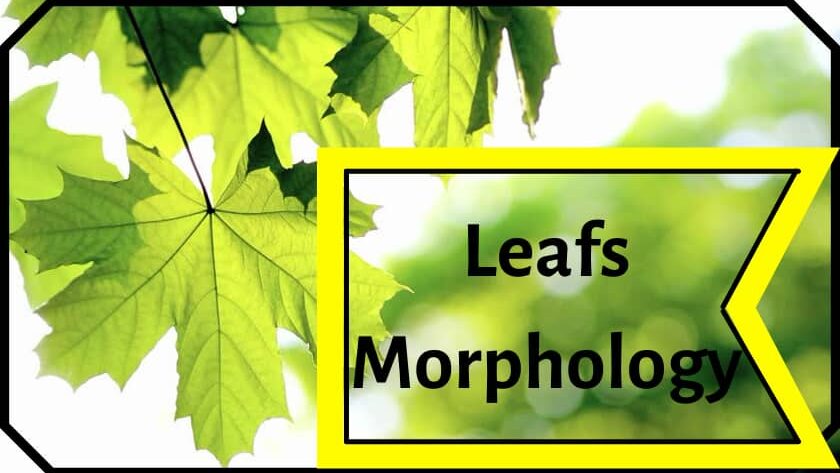In the broad rationale of the period, the leaf is profoundly specific in both construction and capacity. The burned-through level technique for its cutting edge, the lamina, ordinarily shows the foliage leaf’s specialization as a photosynthetic organ. If the foundation of a sessile or petiolate leaf encases the stem, it is alluded to as a sheathing base.
Now and again, the sheathing part of the leaf forms into a noticeable leaf sheath. Stipules, or outgrowths at the foundation of the leaf, are expected in leaves related to trillion hubs. A straightforward leaf has one sharp edge, while a compound leaf has at least two flyer cutting edges associated with an ordinary pivot called the rachis. Could intensify the pamphlets.
Epidermis:
The most elevated scenes of the leaf epidermis are cell pressure and the presence of fingernail skin and stomata. Stomata can happen on the two sides of the leaf or just on either the upper or, all the more ordinarily, the lower side. Stomata are generally spread in the broad leaves of dicotyledons. Stomata happen in columns corresponding to the long hub of the leaf in the contracted extended leaves recognizing monocotyledons and conifers. Are you looking for naturals CBD products? If yes, try NuLeaf Natural. Get a 30% discount on all the natural CBD items using NuLeaf Naturals Discount Code.
Various stomata may show up in a downturn known as a stomatal sepulcher. Stomata might be similar to the other epidermal cells, or they might reach out past the epidermis or underneath it. Generally compromised by trichomes, the burial chambers may have a wet climate.
Mesophyll:
The mesophyll is the focal piece of a leaf edge’s ground tissue.
The ginkgo leaf is broad at the top and tight at the base. It has plenty of dichotomously fanning veins. The epidermis has slim dividers, and there is no hypodermal sclerenchyma. Watch cells are marginally discouraged and must be found on the abaxial side.
Beneath the supple parenchyma is a solitary palisade layer of somewhat short lobed cells. Each of the various vascular groups has a lignified endodermis that is uni-seriate. Tennis is ordinarily found in the endodermal sheath, little piles.
A couple of bonding tracheids flank each group’s xylem. Adhesive conduits substitute with vascular packs.
An Examination of Our Diverse Ecosystem
Inside our assorted biological system, there are numerous similitudes and contrasts between species. There are many plant and creature species, some of which stand undermined more comparative than others. These likenesses feature a broad scope of differences among realms and even species. Dissecting these species’ disparities and similitudes gives a superior comprehension of our unquestionably different biological system.
Plants represent an enormous piece of all life on Earth. Plants are ordered into four gatherings: bryophytes, greeneries, gymnosperms, and angiosperms. The most perceptible qualification between these plants is their appearance. Greeneries, liverworts, and hornworts are instances of bryophytes. Bryophytes are tiny plants with no vascular tissue, genuine leaves, or roots. Genuine greeneries, clubmosses, whisk plants, and horsetails are instances of greeneries. Greeneries have vascular tissue; however, they don’t have seeds. They are a lot bigger than bryophytes; however, a lot more modest than gymnosperms and angiosperms.
Like angiosperms and gymnosperms, plants have left, in contrast to bryophytes.
Conifers, ginkgos, gnetophytes, and cycads are the four significant gatherings of gymnosperms. These plants can develop enormously. Cones are one of the distinctive attributes of gymnosperms. Vascular tissues are one more component that greeneries share with gymnosperms and angiosperms. Gymnosperms are likewise identified by leaf types, which differ altogether between species. Angiosperms, the most widely recognized plant, have a particular appearance. Gymnosperms and angiosperms are conspicuous contrasted with bryophytes and plants, which are low-lying and by and significant minor. There exist numerous contrasts among gymnosperms and angiosperms in that angiosperms bloom, while gymnosperms don’t. Our blooming plants, while gymnosperms are not developed foods grown from the ground, though gymnosperms don’t.
If a creature’s body is divided, it could be thought about unexpectedly. For instance, assume that even animals have a body hole framed inside the mesoderm, otherwise called a coelom. They might be ordered uniquely compared to people who don’t have a coelom. An intestinal system may likewise cause an order distinction. Wipe, for instance, needs gastrointestinal systems, while different creatures have deficient gastrointestinal systems and still, others have complete gastrointestinal systems.
Proliferation and improvement are the last specific order factors. Most animals take part in sexual proliferation. Creatures would then be able to create alongside one of two ways. There is no larval phase of backhanded turn of events. Backhanded advancement starts with a larval stage and advances through transformation to develop grown-ups.




